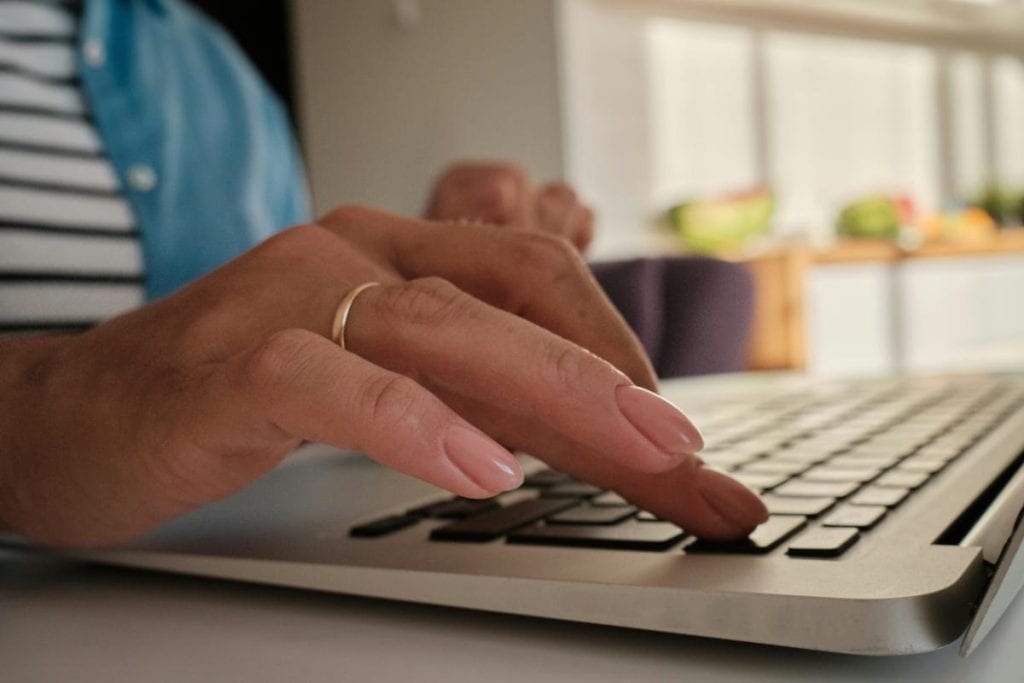
Juggling work and family life under one roof can feel like a circus act, right? Whether you’re answering emails between diaper changes or scheduling conference calls around nap times, working from home as a mom brings its own unique set of challenges.
We know that maximizing productivity is key when you’re balancing career and family. That’s why we’ve put together these 10 game-changing hacks to help you create a home office that really works for you. These tips are designed to help you make the most of your work hours, so you can be fully present for those precious family moments too.
From carving out a dedicated workspace in your busy household to mastering the art of distraction-free focus (yes, it’s possible!), we’re about to transform your work-from-home experience. Ready to boost your productivity and find that elusive work-life balance? Let’s talk about it!
1. Create a Dedicated Workspace
The foundation of a productive home office is a dedicated workspace. This doesn’t necessarily mean you need a separate room, but you should have a specific area that’s solely for work. This physical separation helps your brain switch into “work mode” when you’re in that space and “home mode” when you’re not.
Choose a spot in your home that’s quiet and has minimal distractions. If possible, select an area with natural light and enough space for your equipment. Even if it’s just a corner of your living room or bedroom, make it distinctly work-oriented. This mental association will help you focus when it’s time to work and relax when it’s time to unwind.
2. Optimize Your Internet Connection
In today’s digital age, a reliable internet connection is a must for remote work. Slow or unstable internet can significantly hamper your productivity and cause unnecessary stress.
Start by upgrading your router if it’s more than a few years old. Newer models offer better speed and coverage. Position your router in a central location, away from walls and metal objects that can interfere with the signal.
For the most stable connection, consider professional network cabling services. Ethernet connections are typically faster and more reliable than Wi-Fi, especially for bandwidth-heavy tasks like video conferencing or large file transfers. A professional can ensure your home is properly wired for optimal internet performance.
3. Implement a Time Management System
Effective time management is key to productivity. One popular method is the Pomodoro Technique, which involves working in focused 25-minute intervals followed by short breaks. This helps maintain concentration and prevents burnout.
Utilize digital tools to track your time and tasks. Apps like RescueTime or Toggl can help you understand how you’re spending your work hours, while project management tools like Trello or Asana can keep your tasks organized and prioritized.
4. Minimize Distractions
Home offices often come with unique distractions, from household chores to family members. Invest in a good pair of noise-cancelling headphones to block out ambient noise. These can be particularly helpful if you share your living space with others.
For digital distractions, use website blockers like Freedom or Cold Turkey to limit access to time-wasting sites during work hours. On your phone, use app limits to restrict usage of non-work-related apps during your designated work time.
5. Ergonomic Setup
An ergonomic workspace is essential for long-term productivity and health. Ensure your chair provides proper lumbar support and can be adjusted to the right height. Your feet should be flat on the floor and your eyes level with the top of your computer screen.
Invest in ergonomic accessories like a vertical mouse or a split keyboard to reduce strain on your wrists. A monitor stand can help position your screen at the right height, reducing neck strain.

6. Declutter and Organize
A cluttered workspace can lead to a cluttered mind. Regularly declutter your physical desk, keeping only the essentials within reach. Use organizers for papers, pens, and other office supplies. You particularly need to keep an eye on paper clutter, and using a document shredding service can help if you don’t have time for shredding things yourself. Just store the documents you need to get rid of in an archive box until it’s full to keep things tidy.
Digital clutter can be just as distracting. Organize your computer files into a logical folder structure. Use a consistent naming convention for files to make them easy to find. Regularly clear your desktop of unnecessary files and shortcuts.
7. Optimize Lighting
Proper lighting is often overlooked but can significantly impact your productivity and well-being. Natural light is ideal, so position your desk near a window if possible. This not only reduces eye strain but also helps regulate your circadian rhythm.
When natural light isn’t sufficient, use a combination of ambient and task lighting. A good desk lamp can provide focused light for detailed tasks, while overhead lighting should provide even, glare-free illumination for your entire workspace.
8. Incorporate Plants and Nature
Bringing a bit of nature into your workspace can boost mood and productivity. Studies have shown that having plants in the office can increase productivity by up to 15%. They also help purify the air and add a touch of life to your workspace.
If you’re not blessed with a green thumb, consider low-maintenance plants like succulents, snake plants, or pothos. Even a small desktop plant can make a difference in your work environment.
9. Use Productivity Apps and Tools
Leverage technology to streamline your work processes. Project management tools like Asana or Monday.com can help you keep track of tasks and deadlines. Note-taking apps like Evernote or OneNote can help you organize your thoughts and information.
For team collaboration, tools like Slack or Microsoft Teams can facilitate communication. Cloud storage solutions like Dropbox or Google Drive ensure your files are accessible from anywhere and backed up securely.
10. Take Regular Breaks
It might seem counterintuitive, but taking regular breaks can actually boost your productivity. Continuous work without breaks can lead to burnout and decreased efficiency. The key is to make your breaks intentional and rejuvenating.
Try the 52-17 method: work for 52 minutes, then take a 17-minute break. During your break, step away from your desk. Take a short walk, do some stretches, or practice a quick meditation. These activities can help refresh your mind and body, allowing you to return to work with renewed focus and energy.
If your attention span is shorter, try the Pomodoro Technique. It’s my personal favorite when I just need to get started on something that I’ve been putting off. You’ll work for 25 minutes, take a break for 5 minutes, then repeat those cycles three times. After the fourth 25-minute work interval, take a longer 15 minute break.
Implementing these productivity hacks in your home office can help you achieve that work-life balance you’re looking for. Remember, productivity is personal – what works for one person may not work for another.
Experiment with these strategies and adapt them to fit your unique needs and work style. With the right setup and habits, your home office can become a place of focus, creativity, and accomplishment.
